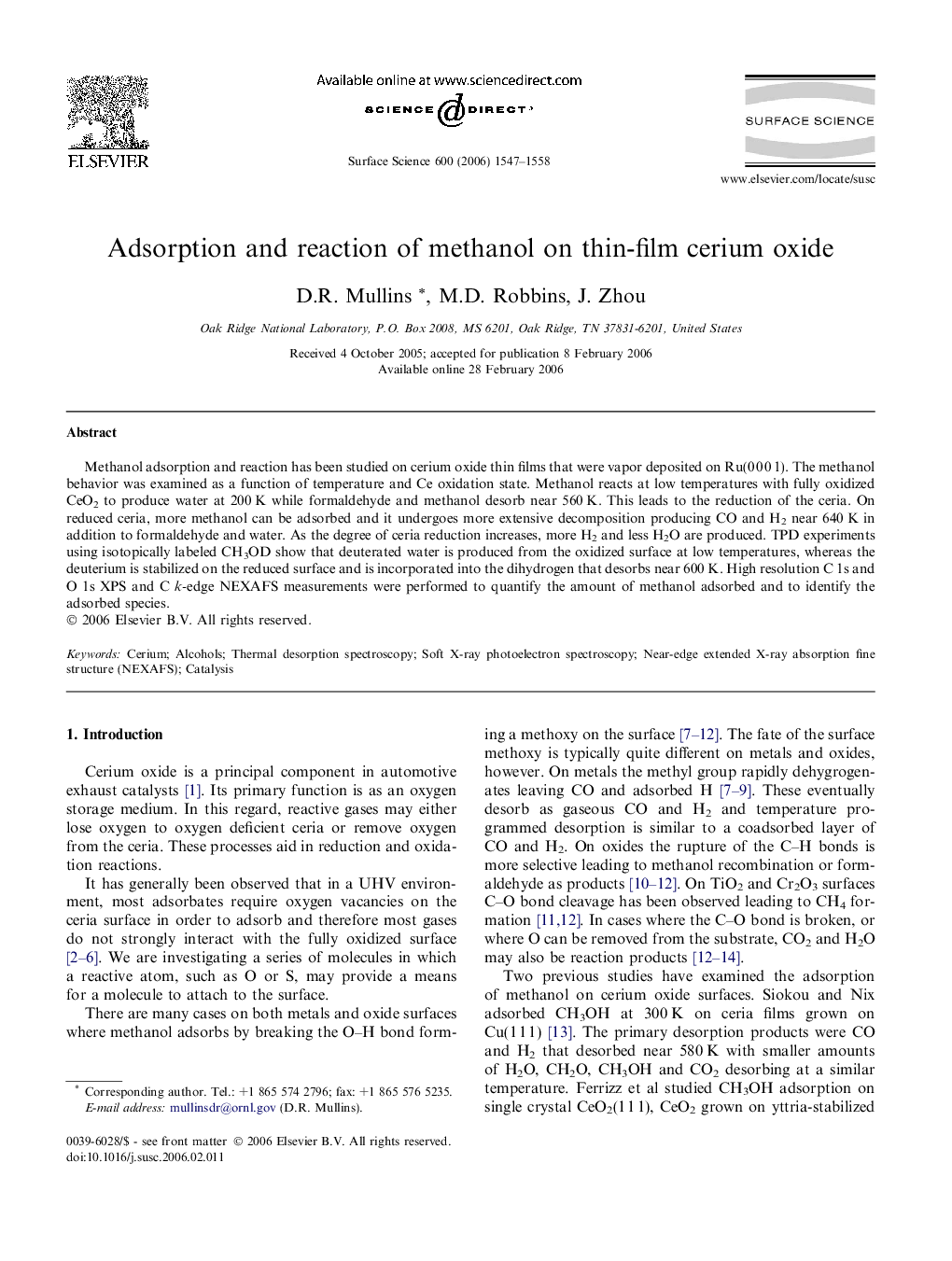| Article ID | Journal | Published Year | Pages | File Type |
|---|---|---|---|---|
| 5426364 | Surface Science | 2006 | 12 Pages |
Methanol adsorption and reaction has been studied on cerium oxide thin films that were vapor deposited on Ru(0Â 0Â 0Â 1). The methanol behavior was examined as a function of temperature and Ce oxidation state. Methanol reacts at low temperatures with fully oxidized CeO2 to produce water at 200Â K while formaldehyde and methanol desorb near 560Â K. This leads to the reduction of the ceria. On reduced ceria, more methanol can be adsorbed and it undergoes more extensive decomposition producing CO and H2 near 640Â K in addition to formaldehyde and water. As the degree of ceria reduction increases, more H2 and less H2O are produced. TPD experiments using isotopically labeled CH3OD show that deuterated water is produced from the oxidized surface at low temperatures, whereas the deuterium is stabilized on the reduced surface and is incorporated into the dihydrogen that desorbs near 600Â K. High resolution C 1s and O 1s XPS and C k-edge NEXAFS measurements were performed to quantify the amount of methanol adsorbed and to identify the adsorbed species.
